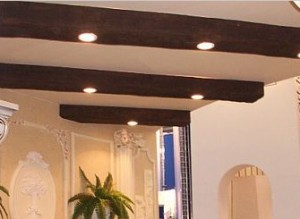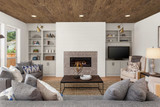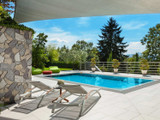
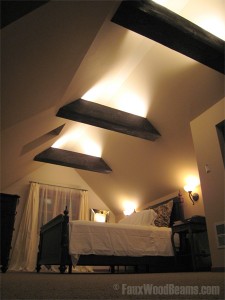 Install hidden uplighting in your beams
Install hidden uplighting in your beams
It goes without saying that faux beams add a warm woody glow to your room. But they can also help add the glow of real light.
The hollow part of the beam is a great place to hide electric wires and route them to light fixtures mounted inside or on top. The three photos show three different ways of lighting up your beams.
Hiding uplights inside the hollow of the beam
The first photo shows suspended beams (attached only at their ends) with lights inside the hollow part, casting indirect light up at the ceiling. These could be fluorescent strips, rope lights, track lights -- whatever gives the effect you want.
These beams are short and hefty, so they're able to bear the weight of the light fixtures without additional support.
Mounting tracklights along the beam top
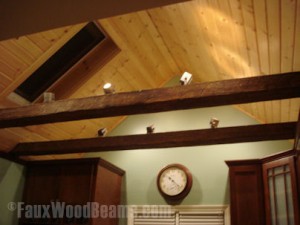 Track lighting in beams adds versatility
Track lighting in beams adds versatility
The second photo shows exposed tracklights along the top of a suspended beam. This is a much longer suspended beam than in the first photo, and it's supported by doubled 2x6s inside the beam. (Our website explains how to install a long suspended beam.)
The tracklights, then, mount to the 2x6s -- not to the beam itself. Because of this, you don't need to worry about the weight or size of the fixtures.
Installing recessed lights in the beam bottom
The third photo shows recessed lights in the bottom of attached beams. You install them just as you would in a plaster or drywall ceiling. Our website gives detailed instructions for installing recessed lights .
Of course, you have to choose fixtures small enough to fit in the hollow part of the beam. And they must be rated "IC" for direct contact with insulation.
In this case the beam itself carries the weight of the fixtures, so it's important to attach the beam securely to the ceiling. Be sure to use construction adhesive along the top edges -- which also prevents stray light from escaping at the beam/ceiling joint.
Shop Related Products